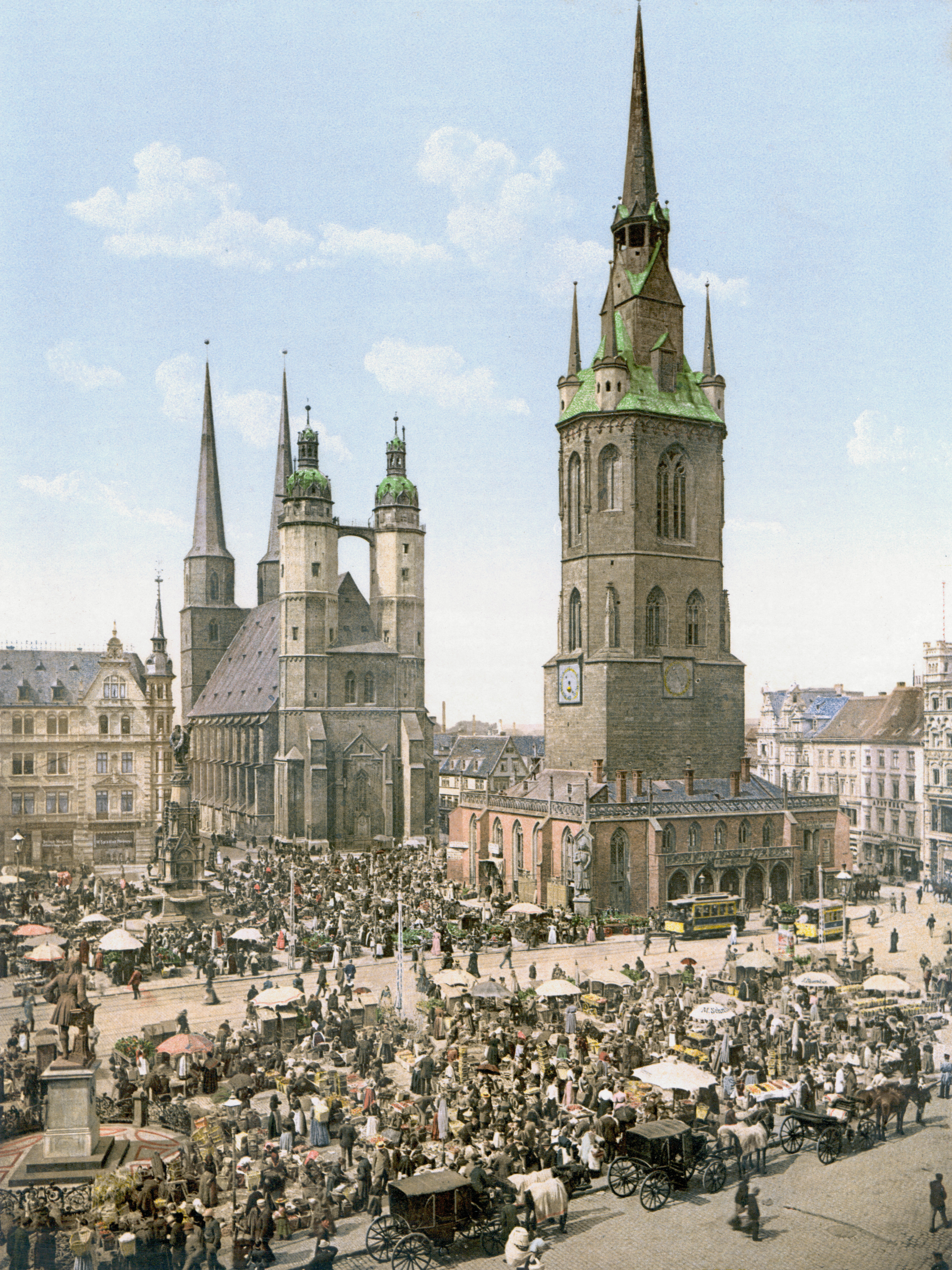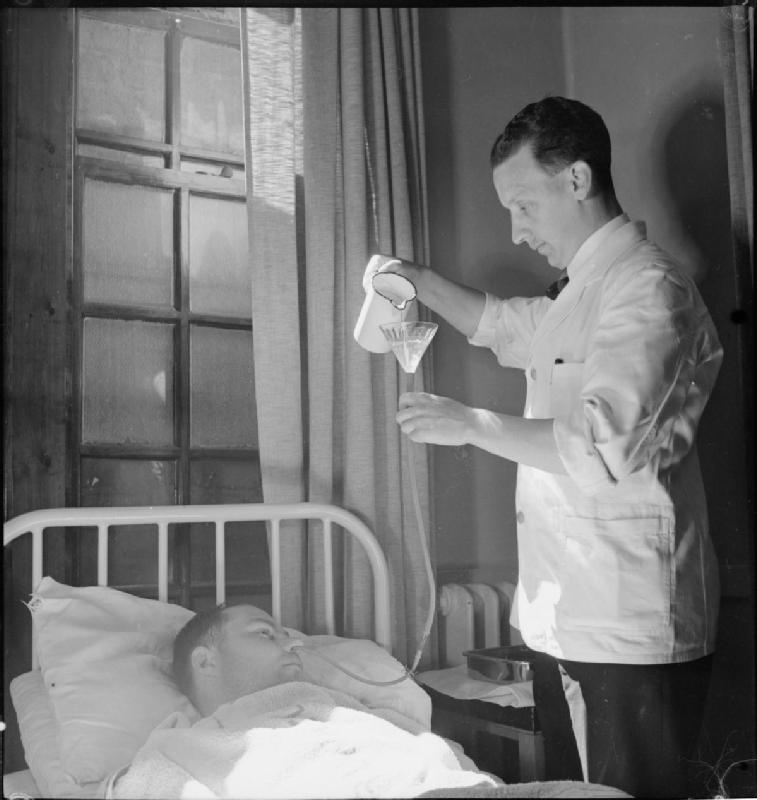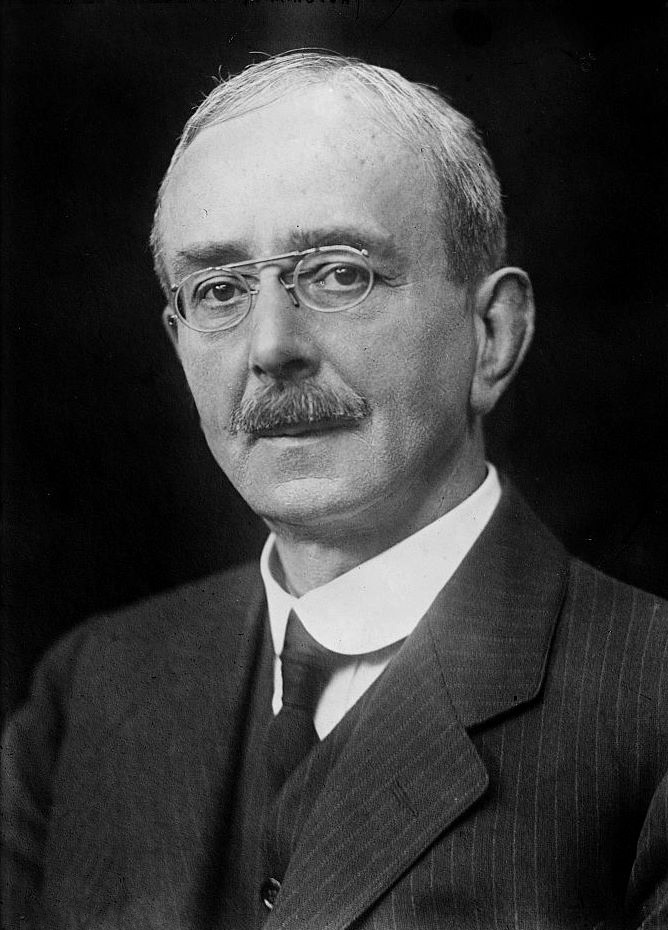|
Hermann Lehmann
Hermann Lehmann (8 July 1910 – 13 July 1985) was a German-born British physician and biochemist known for his works on the chemistry and diversity of hemoglobin. Describing about 75 different hemoglobin, he discovered the most number of hemoglobin types than anyone else. He is regarded as one of the founders of molecular anthropology. Biography Hermann Lehmann was born in Halle, eastern Germany. His father Paul Lehmann was publisher of two local newspaper. His mother Bella (née Apelt) died when he was three years old. He had three sisters and one half-brother. He attended the state school at Halle for his elementary education. An economic depression, hyperinflation in the Weimar Republic, forced his father to abandon publication at Halle, and his family moved to Dresden in 1923. He completed secondary education at the Gymnasium zum heiligen Kreuz (now the Kreuzschule) in 1928. Soon after enrolling in a medical course at the University of Freiberg in Breisgau, his father d ... [...More Info...] [...Related Items...] OR: [Wikipedia] [Google] [Baidu] |
Halle (Saale)
Halle (Saale), or simply Halle (; from the 15th to the 17th century: ''Hall in Sachsen''; until the beginning of the 20th century: ''Halle an der Saale'' ; from 1965 to 1995: ''Halle/Saale'') is the largest city of the German state of Saxony-Anhalt, the fifth most populous city in the area of former East Germany after ( East) Berlin, Leipzig, Dresden and Chemnitz, as well as the 31st largest city of Germany, and with around 239,000 inhabitants, it is slightly more populous than the state capital of Magdeburg. Together with Leipzig, the largest city of Saxony, Halle forms the polycentric Leipzig-Halle conurbation. Between the two cities, in Schkeuditz, lies Leipzig/Halle International Airport. The Leipzig-Halle conurbation is at the heart of the larger Central German Metropolitan Region. Halle lies in the south of Saxony-Anhalt, in the Leipzig Bay, the southernmost part of the North German Plain, on the River Saale (a tributary of the Elbe), which is the third longest rive ... [...More Info...] [...Related Items...] OR: [Wikipedia] [Google] [Baidu] |
Otto Fritz Meyerhof
Otto Fritz Meyerhof (; April 12, 1884 – October 6, 1951) was a German physician and biochemist who won the 1922 Nobel Prize in Physiology and Medicine. Biography Otto Fritz Meyerhof was born in Hannover, at Theaterplatz 16A (now:Rathenaustrasse 16A), the son of wealthy Jewish parents. In 1888, his family moved to Berlin, where Otto spent most of his childhood, and where he started his study of medicine. He continued these studies in Strasbourg and Heidelberg, from which he graduated in 1909, with a work titled "Contributions to the Psychological Theory of Mental Illness". In Heidelberg, he met Hedwig Schallenberg. They married in 1914 and became parents of a daughter, Bettina, and two sons, Gottfried (who referred, after emigration, to himself as Geoffrey) as well as Walter. In 1912, Otto Meyerhof moved to the University of Kiel, where he received a professorship in 1918. In 1922, he was awarded the Nobel Prize in Medicine, with Archibald Vivian Hill, for his work on muscle met ... [...More Info...] [...Related Items...] OR: [Wikipedia] [Google] [Baidu] |
Pembury Hospital
Tunbridge Wells Hospital is a large district general hospital in Pembury near Royal Tunbridge Wells, Kent, England, run by the Maidstone and Tunbridge Wells NHS Trust. The hospital is located on Tonbridge Road, around to the north-west of Pembury, close to the A21 trunk road. It is surrounded by woodland on three sides. History The original hospital on the site was a workhouse designed by John Whichcord to accommodate 400 people which opened in 1836. Additional facilities included an isolation block added in 1838, a new clinical block in 1856, a chapel and a school in 1870, an entrance block in 1872 and an extension in 1890. The facility became known as Pembury County Hospital in 1938 and it joined the National Health Service in 1948. The musician, Shane MacGowan, was born in the hospital in 1957 and the athlete, Dame Kelly Holmes, was born there in 1970. After services had transferred to the new Tunbridge Wells Hospital, all the hospital buildings, other than the chapel, ... [...More Info...] [...Related Items...] OR: [Wikipedia] [Google] [Baidu] |
Makerere University
Makerere University, Kampala (; Mak) is Uganda's largest and oldest institution of higher learning, first established as a technical school in 1922. It became an independent national university in 1970. Today, Makerere University is composed of nine colleges and one school offering programmes for about 36,000 undergraduates and 4,000 postgraduates. The main administrative block was gutted by fire in September 2020 and the cause of the fire is yet to be established. '' U.S. News & World Report'' has ranked Makerere University as the eighth best university in Africa and the 569th best university worldwide. In the 2020 U.S. News & World Report ranking, Makerere is the highest-ranked university in sub-Saharan Africa outside of South Africa. The ''Times Higher Education World University Rankings'' for 2016 ranked it as the fourth best university in Africa. Makerere University is the alma mater of many post-independence African leaders, including Ugandan president Milton Obote and T ... [...More Info...] [...Related Items...] OR: [Wikipedia] [Google] [Baidu] |
Iron-deficiency Anemia
Iron-deficiency anemia is anemia caused by a lack of iron. Anemia is defined as a decrease in the number of red blood cells or the amount of hemoglobin in the blood. When onset is slow, symptoms are often vague such as feeling tired, weak, short of breath, or having decreased ability to exercise. Anemia that comes on quickly often has more severe symptoms, including confusion, feeling like one is going to pass out or increased thirst. Anemia is typically significant before a person becomes noticeably pale. Children with iron deficiency anemia may have problems with growth and development. There may be additional symptoms depending on the underlying cause. Iron-deficiency anemia is caused by blood loss, insufficient dietary intake, or poor absorption of iron from food. Sources of blood loss can include heavy periods, childbirth, uterine fibroids, stomach ulcers, colon cancer, and urinary tract bleeding. Poor absorption of iron from food may occur as a result of an intestinal ... [...More Info...] [...Related Items...] OR: [Wikipedia] [Google] [Baidu] |
Anaemia
Anemia or anaemia (British English) is a blood disorder in which the blood has a reduced ability to carry oxygen due to a lower than normal number of red blood cells, or a reduction in the amount of hemoglobin. When anemia comes on slowly, the symptoms are often vague, such as tiredness, weakness, shortness of breath, headaches, and a reduced ability to exercise. When anemia is acute, symptoms may include confusion, feeling like one is going to pass out, loss of consciousness, and increased thirst. Anemia must be significant before a person becomes noticeably pale. Symptoms of anemia depend on how quickly hemoglobin decreases. Additional symptoms may occur depending on the underlying cause. Preoperative anemia can increase the risk of needing a blood transfusion following surgery. Anemia can be temporary or long term and can range from mild to severe. Anemia can be caused by blood loss, decreased red blood cell production, and increased red blood cell breakdown. Causes ... [...More Info...] [...Related Items...] OR: [Wikipedia] [Google] [Baidu] |
Royal Army Medical Corps
The Royal Army Medical Corps (RAMC) is a specialist corps in the British Army which provides medical services to all Army personnel and their families, in war and in peace. The RAMC, the Royal Army Veterinary Corps, the Royal Army Dental Corps and Queen Alexandra's Royal Army Nursing Corps form the Army Medical Services. History Origins Medical services in the British armed services date from the formation of the Standing Regular Army after the Restoration of Charles II in 1660. Prior to this, from as early as the 13th century there are records of surgeons and physicians being appointed by the English army to attend in times of war; but this was the first time a career was provided for a Medical Officer (MO), both in peacetime and in war. For much of the next two hundred years, army medical provision was mostly arranged on a regimental basis, with each battalion arranging its own hospital facilities and medical supplies. An element of oversight was provided by the appoin ... [...More Info...] [...Related Items...] OR: [Wikipedia] [Google] [Baidu] |
Runwell Hospital
Runwell Hospital was a hospital in the Chelmsford district of Essex. It was managed by the South Essex Partnership University NHS Foundation Trust. History Following the ending of contracts accommodating patients at the Essex County Council's Brentwood Mental Hospital, joint facilities were developed between East Ham and Southend-on-Sea boroughs. A site was chosen in Runwell at Runwell Hall Farm, to the north of the town of Wickford and the firm of Elcock and Sutcliffe were chosen as architects to the site, the former having previously designed the new Bethlem Royal Hospital at Monks Orchard. The foundation stone was laid by Laurence Brock in June 1934 and the hospital was officially opened by Sir Kingsley Wood, Minister of Health, as Runwell Mental Hospital in June 1937. The chapel, dedicated to St. Luke, was placed in a prominent position. The hospital was bombed by the German Luftwaffe during the Second World War; there was extensive damage including a number of large cra ... [...More Info...] [...Related Items...] OR: [Wikipedia] [Google] [Baidu] |
Charles Scott Sherrington
Sir Charles Scott Sherrington (27 November 1857 – 4 March 1952) was an eminent English neurophysiologist. His experimental research established many aspects of contemporary neuroscience, including the concept of the spinal reflex as a system involving connected neurons (the " neuron doctrine"), and the ways in which signal transmission between neurons can be potentiated or depotentiated. Sherrington himself coined the word "synapse" to define the connection between two neurons. His book ''The Integrative Action of the Nervous System'' (1906) is a synthesis of this work, in recognition of which he was awarded the Nobel Prize in Physiology or Medicine in 1932 (along with Edgar Adrian). In addition to his work in physiology, Sherrington did research in histology, bacteriology, and pathology. He was president of the Royal Society in the early 1920s. Biography Early years and education Official biographies claim Charles Scott Sherrington was born in Islington, London, Englan ... [...More Info...] [...Related Items...] OR: [Wikipedia] [Google] [Baidu] |
Beit Memorial Fellowships For Medical Research
The Beit Memorial Medical Fellowships were one of the most prestigious and competitive fellowships for post-doctoral or medical degree research in medicine in the United Kingdom. The Fellowships were founded in 1909 by Sir Otto Beit, a German-born British financier, philanthropist and art connoisseur, in memory of his brother Alfred Beit. Beit Memorial Fellows have been awarded a number of prestigious prizes with seven Nobel Prizes including two for Frederick Sanger (1944) and the 2012 prize for medicine for John Gurdon. Nobel laureates who have held Beit fellowships are Alexander R. Todd (chemistry, 1957), Fred Sanger (chemistry, 1958 and 1980), Macfarlane Burnet (physiology or medicine, 1960), Bernard Katz (physiology or medicine, 1970) and Tim Hunt (physiology or medicine, 2001). The first female member of the Royal Society in 1945 was Marjory Stephenson (1914 Beit fellowship) an early recipient of the fellowship. The Beit Memorial Medical Fellowships were replaced by the prest ... [...More Info...] [...Related Items...] OR: [Wikipedia] [Google] [Baidu] |
Dorothy Needham
Dorothy Mary Moyle Needham FRS (22 September 1896 – 22 December 1987) was an English biochemist known for her work on the biochemistry of muscle. She was married to biochemist Joseph Needham. Early life and education Dorothy Mary Moyle was born in London, to patent clerk John Thomas Moyle and his wife, Ellen Daves. She attended Claremont College, Stockport, an institution run by her aunt, Agnes Daves, and St Hilary's School, Alderley Edge, before entering Girton College, Cambridge. At Girton she became interested in chemistry, and biochemistry in particular after attending the lectures of Frederick Gowland Hopkins. After completing undergraduate studies in 1919, in which she obtained a 3rd Class Honours, she was offered a research position with Hopkins—one of the few scientific leaders at Cambridge at the time who offered research opportunities for women—at the Sir William Dunn Institute of Biochemistry, Cambridge, She earned a Master of Arts in 1923, and a PhD in 19 ... [...More Info...] [...Related Items...] OR: [Wikipedia] [Google] [Baidu] |
Joseph Needham
Noel Joseph Terence Montgomery Needham (; 9 December 1900 – 24 March 1995) was a British biochemist, historian of science and sinologist known for his scientific research and writing on the history of Chinese science and technology, initiating publication of the multivolume '' Science and Civilisation in China''. He was elected a fellow of the Royal Society in 1941 and a fellow of the British Academy in 1971. In 1992, Queen Elizabeth II conferred on him the Companionship of Honour, and the Royal Society noted he was the only living person to hold these three titles. Early life Needham's father, Joseph was a doctor, and his mother, Alicia Adelaïde, née Montgomery (1863–1945), was a music composer from Oldcastle, County Meath, Ireland. His father, born in East London, then a poor section of town, rose to became a Harley Street physician, but frequently battled with Needham's mother. The young Needham often mediated. In his early teens, he was taken to hear the Su ... [...More Info...] [...Related Items...] OR: [Wikipedia] [Google] [Baidu] |








